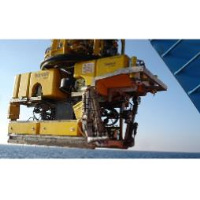Subsea ROV Inspections
The majority of subsea leak detection surveys are conducted using remotely operated vehicles. The leak detection system is powered from the ROV and data is transmitted to the survey vessel via the ROV umbilical. Data are displayed and recorded in real-time on an on-board PC.The sensor, whether using long range fluorescence, acoustics or differential temperature, is mounted at the front of the ROV facing forwards. If the ROV has a manip then it is preferable to mount the sensor on the arm to allow for easier scanning around seals, flanges, manifolds etc.For pipelines, the ROV 'flies' along the route at normal survey speed with the sensor facing forward and partially downward. This ensures that the sensor is detecting any leaking material or acoustic signal from the pipe surface as well as in the water column. Both the long range fluorometer and the acoustic system detect leak signals remotely so it is not necessary for the sensor to contact the leaking fluid.For manifolds, templates, flanges, etc., a more detailed survey is required as there are many components that have the potential to leak and some are inaccessible to ROVs. To locate a leak from any of these components the ROV is settled on the seabed or put in position to hold station while the manip arm scans the sensor around and through the structure. As the data are displayed in real-time, any leak signal detected is seen on-board allowing the subsea ROV operator to immediately initiate a detailed location search.Visit the Neptune Oceanographics Ltd website for more information on Subsea ROV Inspections


